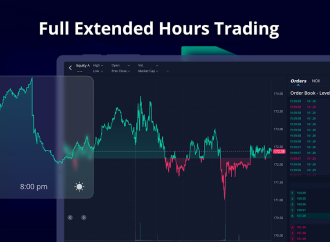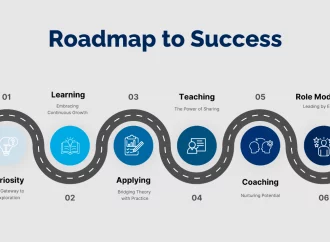Silicon Valley Bank, a leading financial institution that once symbolized the innovation and success of the tech industry, has recently filed for bankruptcy. The news sent shockwaves through the business world and left many wondering if this marks the end of an era for Silicon Valley’s banking sector. But amidst all the uncertainty and speculation,
Silicon Valley Bank, a leading financial institution that once symbolized the innovation and success of the tech industry, has recently filed for bankruptcy. The news sent shockwaves through the business world and left many wondering if this marks the end of an era for Silicon Valley’s banking sector. But amidst all the uncertainty and speculation, one question remains: Can Silicon Valley Bank recover from bankruptcy? In this blog post, we will explore what led to this downfall and examine whether there is hope for revival in its future. Join us as we take a closer look at what lies ahead for Silicon Valley Bank.
What is Silicon Valley Bank?
Silicon Valley Bank (SVB) is a leading financial institution headquartered in Santa Clara, California. SVB provides banking and financial services to technology companies and venture capitalists in the United States and internationally. The bank was founded in 1983 by a group of venture capitalists, and its clients include some of the world’s most innovative and successful companies.
SVB has been through a lot in the past year. In September 2020, the company filed for Chapter 11 bankruptcy protection following years of financial difficulties. The pandemic exacerbated these problems, as SVB was forced to write down the value of its loans and set aside funds to cover bad debts.
The company has since emerged from bankruptcy, and is now focused on rebuilding its business. SVB has taken steps to improve its financial situation, including raising $1.65 billion in new capital, reducing expenses, and selling non-core assets. It remains to be seen if Silicon Valley Bank can recover from this setback and return to its position as a leading player in the tech industry.
What caused Silicon Valley Bank to go bankrupt?
In the fall of 2008, the Silicon Valley Bank (SVB) was one of the first victims of the financial crisis. The bank had invested heavily in subprime mortgages, and when the housing market collapsed, it was left with massive losses. SVB was forced to declare bankruptcy in November 2008.
The bankruptcy filing came as a shock to many in the Silicon Valley community. SVB had long been considered a pillar of strength in the region, and its collapse was a sign that no institution was safe from the financial crisis.
What caused SVB’s downfall? There are a few factors that contributed to the bank’s demise.
First, SVB made risky investments in subprime mortgages. When the housing market crashed, these investments turned sour, leaving the bank with heavy losses.
Second, SVB had too much exposure to the real estate market. In addition to investing in subprime mortgages, the bank also lent money to developers and homebuilders. As the housing market collapsed, these borrowers defaulted on their loans, putting even more pressure on SVB’s finances.
Third, SVB made a series of poor decisions in the years leading up to the financial crisis. In 2005, the bank acquired New Century Financial, a subprime mortgage lender that later went bankrupt. This acquisition added further risk to SVB’s balance sheet and ultimately helped contribute to its own downfall.
SVB’s bankruptcy was a major shock to the Silicon Valley community.
What is the future of Silicon Valley Bank?
The future of Silicon Valley Bank (SVB) is uncertain following its filing for bankruptcy in December 2020. The Bank has been struggling for several years, and its financial situation worsened significantly during the COVID-19 pandemic.
SVB’s primary focus is on providing banking services to technology companies in the Silicon Valley area. However, it also has a significant presence in other areas of the tech industry, including venture capital and private equity.
It is unclear how SVB will be able to continue operating in its current form if it emerges from bankruptcy. The Bank faces significant challenges, including a high level of debt, a declining customer base, and increased competition from online lenders.
It is possible that SVB will be acquired by another bank or financial institution. However, it is also possible that the Bank will be forced to close its doors permanently.
Can Silicon Valley Bank recover from bankruptcy?
As Silicon Valley Bank (SVB) looks to the future, it must grapple with the fact that it filed for bankruptcy in 2008. The financial crisis hit the bank hard, as its portfolio was heavily weighted towards subprime mortgages. SVB was forced to write down the value of its assets and take on billions of dollars in debt.
The question now is whether SVB can recover from bankruptcy. There are reasons to be optimistic. For one, SVB has managed to restructure its balance sheet and raise new capital. It has also been able to maintain its strong relationships with tech startups and venture capitalists.
That said, the road to recovery will not be easy. SVB will need to continue to shed non-performing assets and improve its profitability. It will also need to navigate a challenging regulatory environment. But if Silicon Valley Bank can successfully navigate these challenges, it stands a good chance of emerging from bankruptcy stronger than ever before.
How will Silicon Valley Bank’s bankruptcy affect the economy?
When one of the largest and most well-known banks in an area as influential as Silicon Valley files for bankruptcy, it’s bound to have ripple effects throughout the economy. As Silicon Valley Bank (SVB) is such a large player in the tech industry, their bankruptcy will likely have a significant impact on the sector.
The first and most obvious effect will be on SVB’s clients and partners. The bank has been a major lender to many startups and established tech companies, and its sudden disappearance could leave them scrambling for financing. This could in turn lead to layoffs and a slowdown in the already-struggling tech industry.
In addition, SVB’s bankruptcy will have repercussions for the larger economy. The bank has been an important source of capital for Silicon Valley, and its collapse could lead to a shortage of funds available for investment. This could stall innovation and growth in the area, which would have ripple effects throughout the US economy.
Conclusion
Silicon Valley Bank has seen a long and tumultuous history, but despite all the ups and downs, it is still standing. With its innovative approach to banking and customer service, SVB can continue to play an important role in the local economy. While there are still questions surrounding their future after bankruptcy, they have started on the path of recovery with a new management team in place. Time will tell if they can rise up from this downturn to become one of the top financial institutions in California once again.





















Leave a Comment
Your email address will not be published. Required fields are marked with *